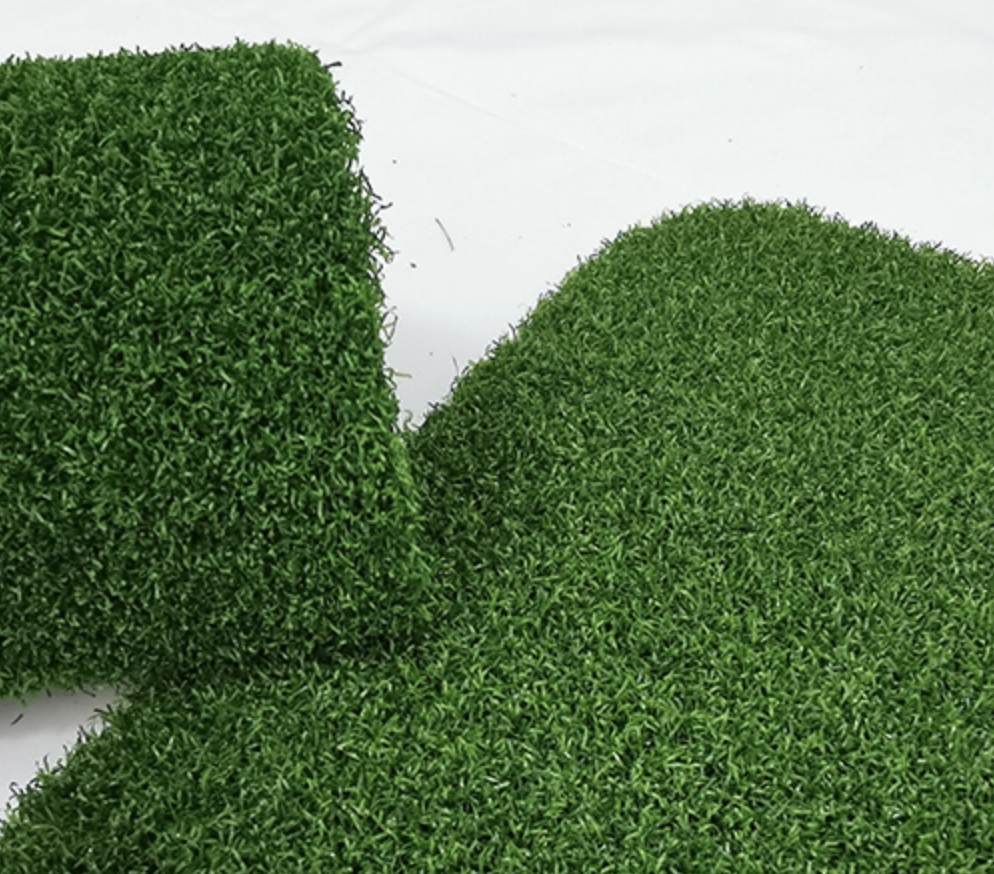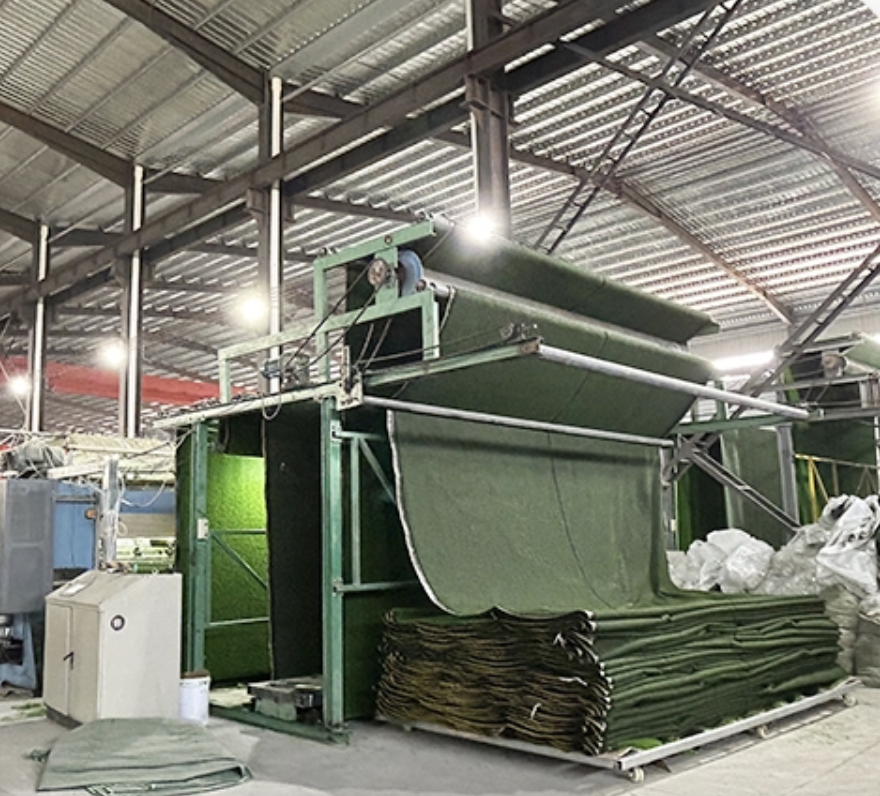
Artificial hockey pitches have transformed modern hockey. They allow consistent ball speed, precise control, and safe play all year. Choosing the right pitch and maintaining it properly saves money and reduces player injuries. They also provide a professional environment, whether for schools, clubs, or elite competitions. In this guide, we explore all types of hockey pitches, installation tips, and maintenance strategies for optimal performance.
Why the Right Hockey Pitch Matters
A hockey pitch affects every aspect of the game. Ball speed, bounce, and player safety all depend on the surface. Poorly chosen pitches can slow the game, increase injuries, and cost more to repair.
Factors to consider:
Level of play: Elite clubs need faster surfaces; recreational use can handle slower pitches.
Frequency of use: Daily practice requires more durable turf than occasional matches.
Multi-sport versatility: Schools often need pitches for football, netball, and lacrosse.
Maintenance capacity: Some pitches require irrigation, infill management, or specialist care.
Budget: Water-based pitches cost more but offer professional performance; sand-filled are cheaper.
Types of Hockey Pitches
Water-Based Hockey Pitches
Water-based pitches use dense, short fibers and need regular watering. The water layer reduces friction, making ball roll smoother and faster while allowing players to slide safely.
Pros:
Smooth ball roll, consistent speed
Low bounce, precise passing
Ideal for national and international competitions
Cons:
Best for: Elite clubs, professional tournaments, high-intensity training
Example: Olympic venues, World Cup pitches
Maintenance tip: Use automated irrigation systems and schedule watering before matches. Avoid overwatering to prevent muddy patches and water waste.
Sand-Dressed Hockey Pitches
Sand-dressed pitches have high fiber density, partially covering sand infill. This creates a fast, smooth surface for the ball. They are popular for schools and mid-level clubs.
Pros:
Ball rolls quickly and consistently
Safer than sand-filled pitches
Easier maintenance than water-based
Cons:
Best for: School leagues, local clubs, multi-use sports facilities
Maintenance tip: Brush infill regularly to prevent fiber compaction and maintain smooth ball roll.
Sand-Filled Hockey Pitches
Sand-filled pitches have a sand layer at the base to support fibers. Fibers are taller, and the ball rolls slower, but the pitch supports multiple sports.
Pros:
Cons:
Maintenance tip: Ensure infill remains evenly distributed, especially in high-use areas like goal circles.
Dry Turf / 3G Hockey Surfaces
Dry turf mimics water-based performance without irrigation. Environmentally friendly and increasingly popular for schools and training grounds.
Pros:
Reduced water consumption
Lower maintenance compared to water-based
Sustainable and eco-conscious option
Cons:
Best for: Schools, training facilities, eco-friendly projects
Maintenance tip: Regular brushing to prevent fiber flattening and infill compaction. Periodically check drainage to avoid puddles.
| Pitch Type | Pros | Cons | Best For | Maintenance Tip |
| Water-Based | Smooth ball roll, low bounce, precise | High cost, needs irrigation | Elite clubs, tournaments | Automated watering, avoid overwatering |
| Sand-Dressed | Fast ball roll, safer, easier upkeep | Slightly slower than water-based | Schools, local clubs | Brush infill regularly |
| Sand-Filled | Multi-sport use, lower cost, easy upkeep | Slower ball speed | Schools, multi-use facilities | Keep infill evenly distributed |
| Dry Turf / 3G | Low water use, eco-friendly, lower upkeep | May not match elite performance | Schools, training grounds | Brush regularly, check drainage |
Hockey Pitch Installation Guide
Planning the Pitch
Before installing a hockey pitch, proper planning is essential. Start by measuring the available space accurately; a standard international hockey field measures 91.4 meters by 55 meters, but slight adjustments may be needed for school or community pitches. Consider the drainage requirements carefully—poor drainage can lead to puddles and uneven play. Choosing the right surface type is critical and should reflect the intended level of play, frequency of use, and your budget. For example, water-based turf is ideal for elite clubs but requires higher maintenance, while sand-filled or sand-dressed surfaces are cost-effective for multi-use and recreational play. If the pitch will host multiple sports, such as football, netball, or lacrosse, factor this into your surface selection to ensure performance and durability.
Preparing the Base
A solid, level base is the foundation of a high-performance hockey pitch. Begin by clearing the site of rocks, debris, and vegetation. The ground must be even and compacted to provide stability and prevent uneven settling over time. Recommended base types include asphalt, concrete, or engineered layers, each providing a firm foundation for the shockpad and turf above. The base also plays a key role in drainage, so make sure the slope is slight but consistent to guide water toward drainage points. Proper preparation at this stage reduces the risk of bumps, uneven ball roll, and costly repairs later.
Shockpad Installation
The shockpad is a crucial layer that cushions players and supports consistent ball movement. For water-based pitches, in-situ poured shockpads are preferred because they create a seamless, even surface and reduce the risk of irregularities that can occur with pre-fabricated pads. The thickness and firmness of the shockpad should match the intended level of play: firmer pads for high-speed elite games and slightly softer for training or multi-sport use. Correct installation ensures player safety, helps prevent injuries, and contributes to optimal ball speed and roll across the pitch.
Turf Laying
Laying the artificial turf requires careful attention to detail. Turf rolls should be spread out for 1–2 days to allow the material to shrink naturally, avoiding tension issues later. Use turf tensioners to prevent wrinkles and maintain a flat surface. Seams must be glued with high-quality adhesive to withstand heavy use, and edges should be securely fixed using nails or drainage boards. Consistent flatness across the entire pitch is vital—not only for ball performance but also for player safety. Take your time during this process, checking alignment frequently, and avoid laying turf under extreme temperatures, which can cause expansion or contraction issues.
Additional Features
A hockey pitch is more than just turf; additional features are necessary for safety, compliance, and usability. Fencing around the perimeter prevents balls from leaving the field and protects spectators. Provide team shelters and seating for players and coaches. Floodlights allow for evening matches and training sessions, while clearly marked goalposts and pitch lines are essential for gameplay and FIH compliance. For international or certified pitches, these features are not optional—they are required to meet FIH standards and ensure the facility is ready for competitive use.
![XiHY Artificial grass XiHY Artificial grass]()
Hockey Pitch Maintenance
Daily and Weekly Tasks
Maintaining your hockey pitch starts with small, regular efforts. Daily or weekly checks help keep your turf safe and performing well. Begin by removing leaves, twigs, litter, and other debris—this prevents hazards for players and preserves the appearance of your pitch. Next, brush the turf to keep infill evenly distributed and the fibers upright, which ensures smooth ball roll. Walking along the seams frequently helps detect early signs of wear, minor splits, or loose seams, allowing for quick repairs before they escalate. For water-based pitches, regular watering is essential to reduce friction, keep the surface cool, and minimize the risk of “carpet burn” for players. Avoid overwatering, as this can create muddy patches and waste water.
Monthly or Seasonal Tasks
Every month or at the start of each season, your hockey pitch benefits from a more thorough inspection and grooming. Deep brushing and grooming restores fiber uprightness and distributes infill evenly, improving ball performance. Check infill levels and replenish any areas that are compacted or depleted, especially around high-traffic zones like goal circles. Inspect all surrounding infrastructure such as drainage systems, fences, gates, and seating, ensuring they remain in good condition and do not cause debris buildup. Finally, examine the pitch for moss, algae, or weeds, particularly in shaded or damp areas, and take action promptly to prevent growth from spreading.
Specialist Maintenance
Specialist maintenance is recommended annually or for high-use facilities. Power sweeping can remove deeply embedded debris and revitalize the surface. In high-traffic areas, decompaction treatments restore infill performance and prevent uneven surfaces. Turf rejuvenation—such as brushing, infill adjustment, and minor repairs—extends lifespan and keeps playing conditions consistent. For elite or FIH-certified pitches, retesting may be required to maintain accreditation, ensuring the field continues to meet professional standards. Engaging specialists helps maintain performance, safety, and long-term investment value.
Preventative Care
Preventative measures reduce wear and protect your hockey pitch from damage. Clean spills immediately to prevent staining and fiber discoloration. Remove sharp objects like glass, sticks, or broken equipment, which can tear turf or injure players. Display clear usage guidelines for players and visitors, including permitted footwear and equipment, to avoid accidental damage. In areas prone to moss or weeds, apply approved chemicals carefully, following manufacturer instructions to ensure player safety and environmental compliance. These proactive steps minimize costly repairs and maintain a top-quality pitch for all users.
FAQ
What are the main types of artificial hockey pitches?
The main types of artificial hockey pitches include water-based, sand-dressed, sand-filled, and dry turf (3G) surfaces. Each type has different performance characteristics, costs, and maintenance requirements.
Which hockey pitch is best for elite competitions?
Water-based pitches are preferred for elite and international competitions because they provide smooth ball roll, low bounce, and allow players to perform sliding skills safely.
Can a hockey pitch be used for multiple sports?
Yes, sand-filled and sand-dressed pitches are suitable for multi-sport use, including football, netball, and lacrosse, making them ideal for schools, colleges, and community facilities.
How long does an artificial hockey pitch last?
A well-constructed and properly maintained hockey pitch can last around 8–12 years, depending on materials, installation quality, frequency of use, and maintenance.
What maintenance does a sand-filled or sand-dressed pitch require?
Regular brushing, monitoring and redistributing infill, inspecting seams, and removing debris are essential to keep sand-filled or sand-dressed pitches performing well. Seasonal grooming and specialist care may also be needed.
Conclusion
Choosing the right hockey pitch and maintaining it properly is essential for player safety, consistent performance, and long-term cost savings. From water-based elite surfaces to versatile sand-filled or dry turf options, each pitch type has unique benefits and maintenance needs. Regular care, timely repairs, and professional inspections ensure your pitch stays in top condition and provides the best playing experience.
For anyone looking to install or maintain a high-quality artificial hockey pitch, Qingdao XiHY Artificial Grass Company offers professional solutions. They supply, install, and maintain premium synthetic surfaces tailored to schools, clubs, and elite facilities. With expert guidance and reliable products, XiHY helps you create a safe, durable, and top-performing hockey pitch for years to come.











